Laboratory Room Placard
[1545227674].jpg)
Safety Placard Definitions
1. Room Location
2. General Laboratory Information and Guidelines.
3. Important Contact Information for Responsible Laboratory Staff
4. Potential Chemical Hazards within the space. Please click for more information
5. Personal Protective Equipment requirements which must be used or avoided while working in the room. Please click for more information
6. Potential Physical Hazards which might be encountered while working in this space. Please click for more information
7. Additional Laboratory specific information you might need to know.
Chemical Hazard Information and Definitions
Flame over Circle
[1543414215].jpg)
This symbol on a chemical label means that the substance is an oxidizer. Oxidizers may cause a fire by increasing the concentration of oxygen in the air.
Skull and Crossbones
[1543414215].jpg)
Substances with a hazard of acute toxicity will have this symbol on their chemical label. Acute toxicity means that exposure to a single dose of the chemical may be toxic or fatal if inhaled or swallowed, or if it comes into contact with the skin.
Corrosion
[1543414215].jpg)
This pictogram on a chemical label means that the substance causes skin burns, eye damage, or destroys metals
Exclamation Mark
[1543414215].jpg)
It is used on a chemical label for substances that represent the following hazards:
- Irritant–irritates the skin or eyes;
- Skin sensitizer–which is an allergic response following skin contact;
- Acute toxicity–which may be fatal or cause organ damage from a single short-term exposure;
- Narcotic effects like drowsiness, lack of coordination, and dizziness; and
- Respiratory tract irritation.
Flame
[1543414215].jpg)
It appears on chemical labels for substances that are:
- Flammables–which are gases, aerosols, liquids, or solids that will burn or ignite under certain conditions,
- Self-Reactives–heating alone, without air, may cause fire or explosion,
- Pyrophorics–in small amounts, may ignite within 5 minutes after contact with air,
- Self-Heating–which may catch fire only in large amounts and after long periods of time when exposed to air,
- Emitters of flammable gas, and
- Organic peroxides–which, when heated, may cause fire or explosion; may be sensitive to impact or friction; and may react dangerously with other chemicals.
Exploding Bomb
[1543414215].jpg)
The exploding bomb pictogram appears on the chemical labels of substances that are:
- Explosives—which is a solid or liquid chemical capable of a chemical reaction that causes damage to the surroundings,
- Self-Reactive—heating may cause fire or explosion without the need for air, or
- Organic peroxides—again, heating may cause fire or explosion.
Gas Cylinder
[1543414215].jpg)
This pictogram on a chemical label means that the substance is a compressed, liquefied, or dissolved gas under pressure at 29 pounds per square inch or more.
Personal Protective Equipment Definitions
Eye Protection
[1543414243].jpg)
Some type of eye protection must be worn in this space.
Goggles
[1543414243].jpg)
Full splash goggles must be worn.
Safety Glasses
[1543414243].jpg)
Safety glasses must be worn in the space.
Lab Coat
[1543414243].jpg)
A lab coat must be worn while working in this space.
No Shorts
[1543414243].jpg)
Shorts are not allowed to be worn while working in this space.
No open toed shoes.
[1543414243].jpg)
No open-toed shoes are allowed to be worn in this space. The entire foot must be covered at all times.
Gloves
[1543414243].jpg)
Gloves must be used when working in this space. Please be considerate not to touch any communal equipment, or wear them outside the lab.
Loose Fitting Pants Only
[1543414243].jpg)
Loose fitting pants must be worn while working in the space. No tights are allowed.
Special Hazard Definitions
Biosafety Hazard
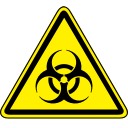
Potential biohazardous materials are located in this space.
Laser Radiation
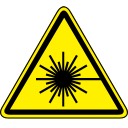
The use of laser equipment is used in this space.
Flying Particles
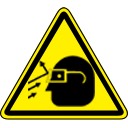
Risk of flying projectiles while equipment is operating in this space.
Sharp Objects

Risk of sharp objects in this space.
Rotating Equipment
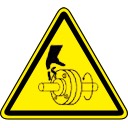
Rotating equipment in operation which will pose a personal safety risk.
Radiation
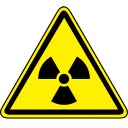
The high energy emission of energy as electromagnetic waves or moving subatomic particles.
Strong Magnetic Field
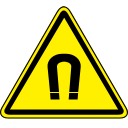
An invisible field that exerts a magnetic force on substances which are sensitive to magnetism.
Pressure - Vacuum
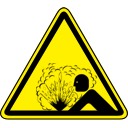
Equipment in the space operates either under pressure or vacuum potentially causing an explosion.
Electric Shock
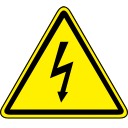
Potential equipment which could deliver a dangerous level of electricity to the body.
Pinch Point
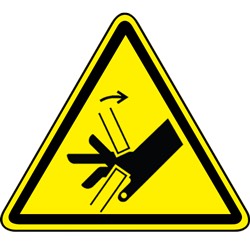
Pinch points are points in and around machinery where there is a chance of a body part getting caught between a stationary and a moving part of a machine.
Asphyxiation
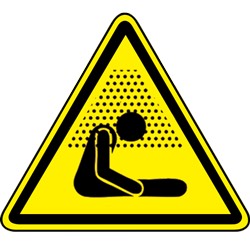
Conditions could be present where oxygen could be displaced resulting in suffocation.
UV Light
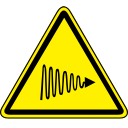
Ultraviolet Radiation present in the room.
Animal Room
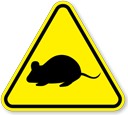
This room houses live mice. Entering the room could cause severe infection to the animals in this facility. Please ask the laboratory staff for training before entering the room.
